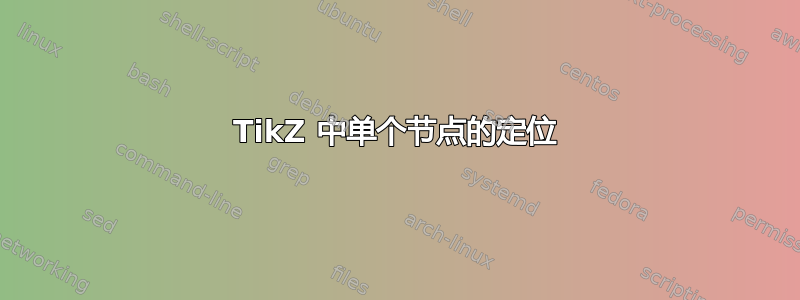
我一直在尝试创建一个tikzpicture具有单个中心节点的。但是,我发现关于定位的所有信息都与相对定位有关,并且在单个节点上不起作用。
例如
\begin{tikzpicture}
\node[draw] at (0, 6) (A) {$e$};
\path (A) edge [loop above] node {$\alpha$} (A)
edge [loop left] node {$\beta$} (A)
edge [loop right] node {$\gamma$} (A)
edge [loop below] node {$\delta$} (A);
\end{tikzpicture}
仍然将节点放在左侧。有人知道这是如何工作的吗?;)
答案1
对于图像内容,您无法(明确)确定其在文本中的位置(例外是与页面锚点和remember picture选项overlay/宏有关的绝对位置)。例如,在您的姆韦您用于定位节点的使用:
\node[draw] at (0, 6) (A) {$e$};
但这给出了与使用相同的图片位置
\node[draw] at (0, 0) (A) {$e$};
或者
\node[draw] (A) {$e$};
仅在某些情况下,当图片比文本宽时,内容图像才会对图像位置产生影响,此时您只能通过局部折叠文本宽度将其居中。
为了居中,正如评论中提到的,您可以使用(特殊)环境:
- 当你不允许图像浮动时:
\begin{center}
< your image >
\end{center}
- 当您允许浮动(通常使用)时,您应该使用浮动环境
figure:
\begin{figure}[htp]
\centering % <--- for center image in environment
< your image >
\end{figure}
[htb]文本中图形定位的选项在哪里( htb:此处或顶部或底部)
您的形象定位示例:
\documentclass[12pt,a4paper]{article}
\usepackage{tikz}
\usepackage{lipsum}
\begin{document}
\lipsum[11]
\begin{center}
\begin{tikzpicture}
\node[draw] at (0, 6) (A) {$e$};
\path (A) edge [loop above] node {$\alpha$} (A)
edge [loop left] node {$\beta$} (A)
edge [loop right] node {$\gamma$} (A)
edge [loop below] node {$\delta$} (A);
\end{tikzpicture}
\end{center}
\lipsum[11]
\begin{figure}[htb]
\centering
\begin{tikzpicture}
\node[draw] at (0, 0) (A) {$e$};
\path (A) edge [loop above] node {$\alpha$} (A)
edge [loop left] node {$\beta$} (A)
edge [loop right] node {$\gamma$} (A)
edge [loop below] node {$\delta$} (A);
\end{tikzpicture}
\end{figure}
or in case when you like to have caption describing figure
\begin{figure}[htb]
\centering
\begin{tikzpicture}
\node[draw] (A) {$e$};
\path (A) edge [loop above] node {$\alpha$} (A)
edge [loop left] node {$\beta$} (A)
edge [loop right] node {$\gamma$} (A)
edge [loop below] node {$\delta$} (A);
\end{tikzpicture}
\caption{my very nice picture}
\label{fig:node-loops}
\end{figure}
\lipsum[11]
\end{document}



